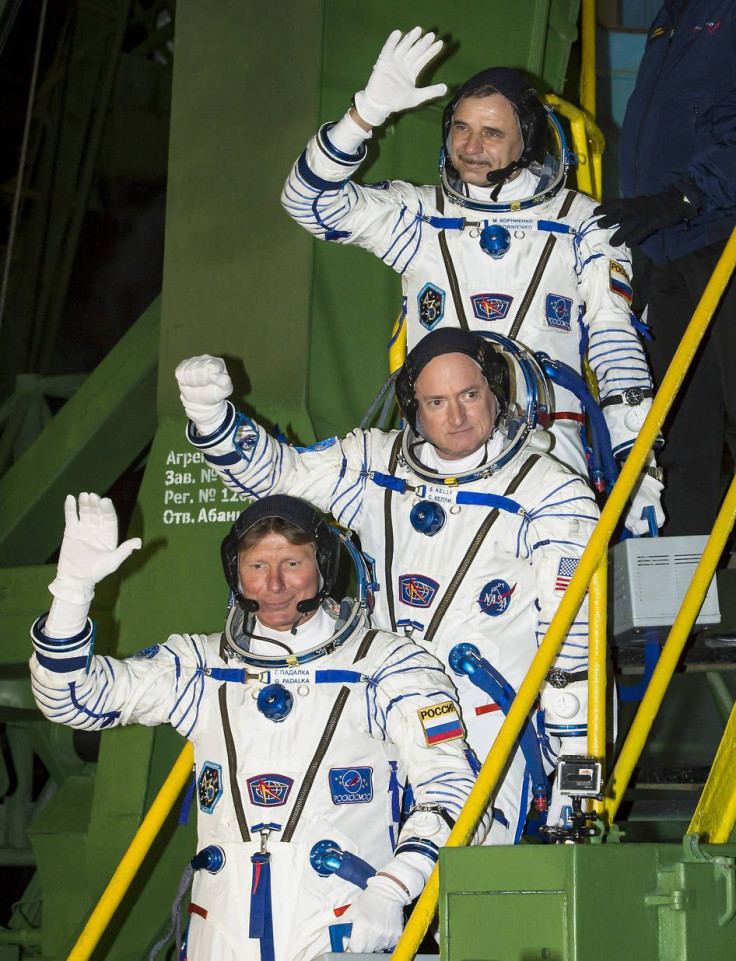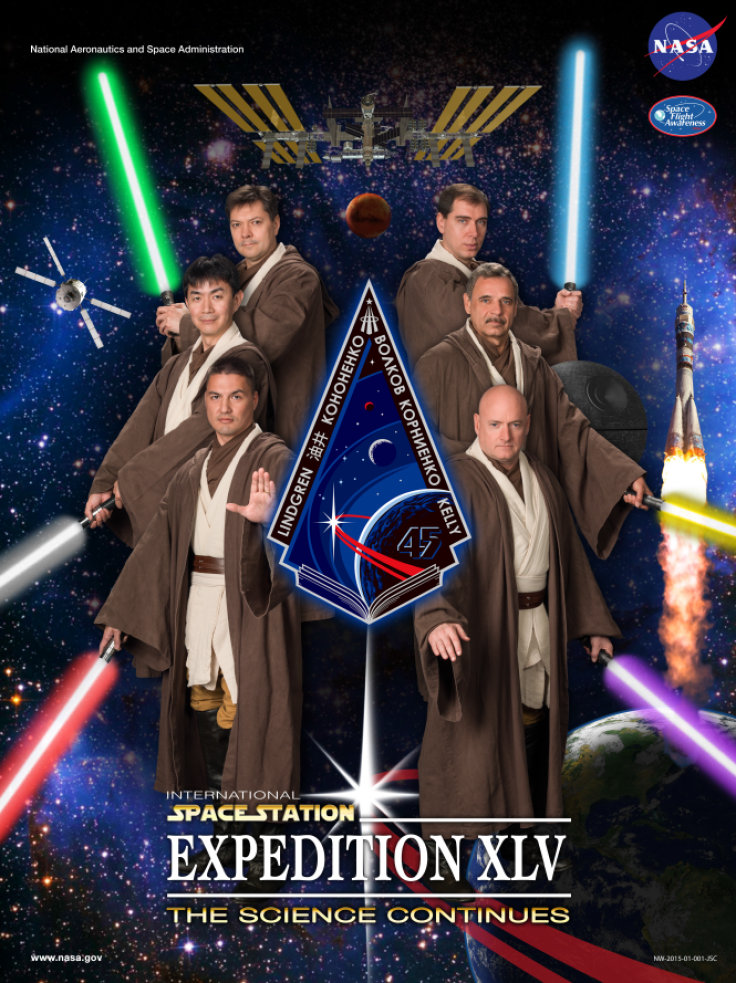One-Year Crew Launch Live Stream: Watch The International Space Station One-Year Mission Take Off Here

NASA astronaut Scott Kelly is getting ready for an unprecedented feat for an American. Kelly and Russian cosmonaut Mikhail Kornienko are the "one-year crew," and they will launch with Russian cosmonaut Gennady Padalka, who will serve a standard mission, to the International Space Station on Friday. The mission is vital to NASA's plans for deep-space exploration and its anticipated manned mission to Mars in the 2030s. The NASA One-Year Crew live stream begins at 2:30 p.m. EDT with the launch scheduled for 3:42 p.m. EDT.
"All the best to @StationCDRKelly on his #YearInSpace. Look forward to the scientific insights he’ll return to us on Earth." - John Holdren
— The White House OSTP (@whitehouseostp) March 27, 2015For Kelly and Kornienko, it's less of a 365-day vacation from gravity and Earth and more like a year inside a giant floating lab where you're the test subject. NASA and Roscosmos have a series of joint investigations that will be conducted aboard the space station. The astronauts will have individual investigations that will explore the effects of microgravity on everything from the eyes to muscle loss to what's happening at a molecular level. The investigations are grouped into seven categories: function, behavioral health, visual impairment, metabolic, physical performance, microbial and human factors.
Just awoke from pre-launch nap. Last time in bed for a year. Tomorrow it will be like this #ISS http://t.co/N63E0RFzTS
— Scott Kelly (@StationCDRKelly) March 27, 2015There's also a unique aspect of the one-year mission that will be subject to its own set of investigations. While Kelly spends a year in space, his twin brother, retired astronaut Mark Kelly, will remain on Earth. The twins give NASA an incredible opportunity to study the effects of microgravity and space on a genetic level. NASA has approved 10 twin investigations as part of the mission. Mark Kelly's investigations will be more observational than his brother's, but each will give blood and other samples that will be tested after Scott returns to Earth.
The one-year mission gives researchers and space agencies an opportunity to learn more about what happens to our bodies in space for long periods of time. Astronauts usually spend four to six months aboard the space station, but a trip to Mars or a longer mission to retrieve an asteroid near the moon pose unique challenges that Kelly and Kornienko could help solve. The space station serves as a giant research lab, and the investigations could help lead to better treatments for diseases and disorders on Earth.
Ahead of ISS Expedition 43, NASA revealed its expedition posters. These science fiction-themed posters feature the crew and some fun Photoshop work. Kornienko and Kelly will serve on Expedition 43, Expedition 44, Expedition 45 and Expedition 46. Kelly will serve as the commander for Expedition 45, and the poster for that mission was inspired by "Star Wars."

Ahead of the one-year mission, Kelly had to worry about mundane things like bills and utilities. "I'm worried that, when I'm in orbit, I wouldn't even know," Kelly said of the possibility that his utilities could be cut off while he was in space in an interview with International Business Times. Kelly previously had his utilities shut off twice during previous missions. While Kelly will be the first NASA astronaut to spend a year in space, Kornienko could turn to four cosmonauts who have accomplished the feat. Speaking to retired cosmonaut Vladimir Titov, who spent a year in space in 1988, gave Kornienko a boost in confidence while preparing for the one-year mission.
The NASA live stream of the one-year crew launch begins at 2:30 p.m. EDT. The mission will launch from the Baikonur Cosmodrome in Kazakhstan. The crew's Soyuz spacecraft will dock with the space station at 9:36 p.m. EDT while the hatches will open at 11:15 p.m. EDT. The NASA broadcast starts at 8:45 p.m. EDT for the docking procedure and 10:45 p.m. EDT for the hatch opening.
Broadcast live streaming video on Ustream© Copyright IBTimes 2024. All rights reserved.












